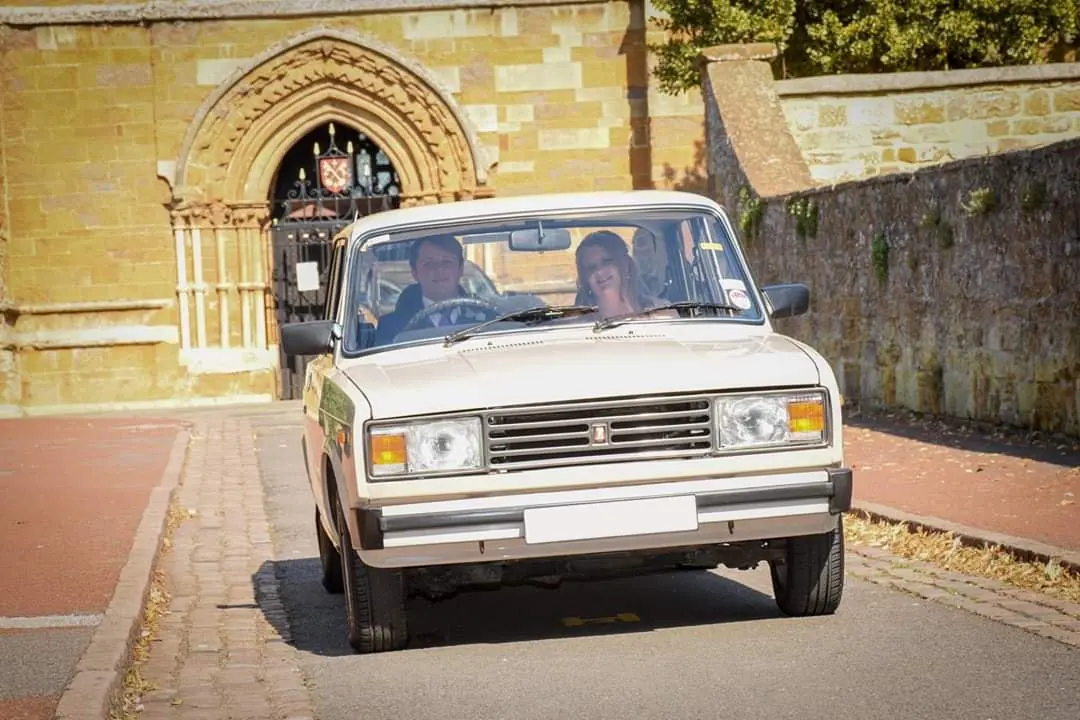MEET THE OWNER – MICHAEL DICKENS AND HIS LADA RIVA
12 August 2024
“I found it in a scrap yard in Kempston. The old lady that owned it from new had crashed it into her house and stopped driving. Her family scrapped it, and I bought it blind for £300 to cannibalise it for parts for my 1994 Riva Estate. It was immaculate when it turned up (aside from a dented wing and smashed headlamp), and I just couldn’t break it up.”
Michael’s Riva was registered in Luton in 1996, making it one of the final Ladas to be officially imported to the UK. The story of this still much-misunderstood vehicle is a fascinating (and labyrinthine) narrative dating from July 1965, when discussions commenced between Fiat and the USSR.

The Guardian reported on a deal worth £285 million to the Italian firm in May 1966. On the 19th April 1970 the first VAZ 2101 left the production line. Although it resembled the 124, Soviet engineers had altered 65% of Fiat components, and installed over 800 changes from the Italian parent model.
In the following year, the car magazine Za Rulem started a competition to select a new export name for the 2101 and Lada - the goddess of beauty, love, joy and youth in Slavic mythology – was the winning entry. In 1973, VAZ installed a production line for RHD models. Satra Motors displayed the Lada at that year’s London Motor Show.
UK imports of the Lada 1200 began in May 1974, and in 1979 VAZ launched the facelifted 2105 with a 1.3-litre OHC engine. The 1.5-litre 2107 followed in 1982 and sales in this country began, under the Riva name, in 1983. However, the motoring press was not universally keen. What Car believed the chief merit of the 1500 GLS version was that its FSO Polonez, Skoda Estelle and Yugo 513 rivals were much worse.
Car—slightly surprisingly, given how acerbic they could be in the 1980s—was more accurate in its assessment of the Riva. In their view, “The Lada is honest and boring. It will soldier on for years, and it deserves to. The price is right; the market is sure, the appeal to enthusiasts is minimal.”
Leaving aside the “boring,” the Riva was the ideal vehicle for a motorist trading in a 1978 Morris Marina 1.3 S2 and who needed room for five, easy home servicing and a large boot on a Ford Fiesta Popular budget. The typical Lada buyer had no interest in being a dedicated follower of fashion and was far more interested in value for money—which Satra Motors certainly provided. In 1988, they sold more than 30,000 Ladas.
By the early 1990s, ‘Lada Jokes’—often uttered by comics who made Little and Large resemble Morecambe and Wise—were a backhanded compliment to the marque’s presence in this country. But the design was now showing its age, and the Riva faced an increasing number of younger rivals, such as Proton.
In 1996, Lada imports amounted to just 8,000 cars. The 4th July 1997 marked the end of the marque in the UK, partially due to tighter emission controls. The Telegraph somewhat rudely reported: “Motoring’s answer to Mr Byrite is pensioning off its ancient Riva saloons and estates in this country”.
This makes the Dickens Riva a most intriguing machine that reflects changing attitudes to the Lada name. A new generation of enthusiasts appreciates the Riva for its own merits, and Michael’s 1996 example is guaranteed to cause a stir at shows. He also used his Lada as a wedding car.
And the Riva more than lived up to the brochure’s promise: “There’s good news for motorists who had resigned themselves to having to settle for a secondhand car”.
With thanks to Michael Dickens for their time and permission to use the image in this blog.
